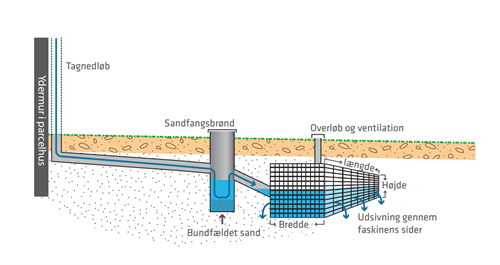Sand traps
A sand trap is a relatively simple, subsurface construction
consisting of an input and an output, the sand trap itself in which
the sand settles at the bottom, as well as a storage for the
deposited sand. The sand trap serves to remove sand and coarse
particles from the rainwater. When the water passes through the
sand trap, the water will be slowed down and the heavier particles
can fall to the bottom. Sand traps are normally made from concrete
of plastic. Sand traps come in different shapes and sizes and are
used before the water is conveyed directly to the main sewer or a
receiving water body. Furthermore, they are often installed in LAR
facilities (facilities for local drainage of rainwater) to remove
sand and coarse particles, so that the LAR facility does not clog
up. A sand trap increases the lifespan of the LAR facility and
results in less expenditure on maintenance and operation.
Sand traps can be used
- in drains from paved and unpaved areas;
- in downpipes and similar that are at risk of clogging up with
branches, twigs and leaves, etc.;
- in drainage installations before connection to the pump well
and to drain outlets;
- before oil/petrol traps and grease traps, if the water runoff
contains sand, gravel or similar.

Senest redigeret:
05-02-2014